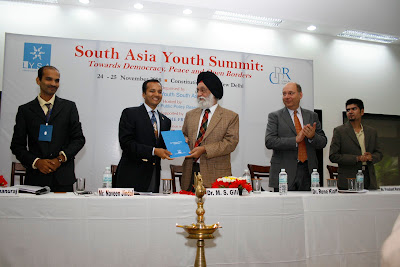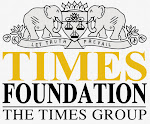
South Asia Youth Summit
“Towards Democracy, Peace and Open Borders”
Constitution Club, New Delhi
24- 25 November 2008
LYSA organized the first South Asia Youth Summit in
The Summit was inaugurated by Dr. M.S.Gill, Hon’ble Minister of Youth Affairs and Sports, Govt of India. Dr.Gill emphasized the need to setup democratic institutions in the South Asian countries to ensure the accommodation of diverse opinions in the decision making process. By citing the Indian example he highlighted the advantages of democracy and stressed the need to establish democratic institutions in
Over the two day schedule participants got to interact with eminent speakers from various countries of South Asia who presented their views on a range of subjects related to the broad theme; Democracy, Peace and Open Borders. Some of these speakers included, Dr. Donya Aziz, Member, National Assembly, Pakistan; Mr. Manish Tiwari, Secretary and Spokesperson, All India Congress Committee, India; Mr. Pradeep Peiris, Centre for Policy Alternatives, Sri Lanka; Dr. Zafarullah Khan, Executive Director, Centre for Civic Education, Pakistan; Prof. N.R. Madhava Menon, Founding Director, National Law School, India; Dr. Najmul Hossain, Economist, Bangladesh; Dr.P.V.indiresan, Former Director, Indian Institute of Technology; Dr. Parth J. Shah, President, Centre for Civil Society, India; Ms. Arpita Nepal, Samruddhi Foundation, Nepal; Mr.Bart Woords, Secretary General, IFLRY; Mr.Jan Argy Tolentino, President, YLDA and many others from all across South Asia.
The participants discussed upon issues like Youth and Politics, Youth Participation in Development, Market Economy and South Asian Free Trade Zone, Quality Education for All: Choice & Competition, State and Democracy and Human Rights in
The culmination of the two day summit took place at India Gate where participants formed a youth chain and lit candles in solidarity with each other to fight against terrorism and spread the message of peace. And there began the “drafting of a new South Asia.”









